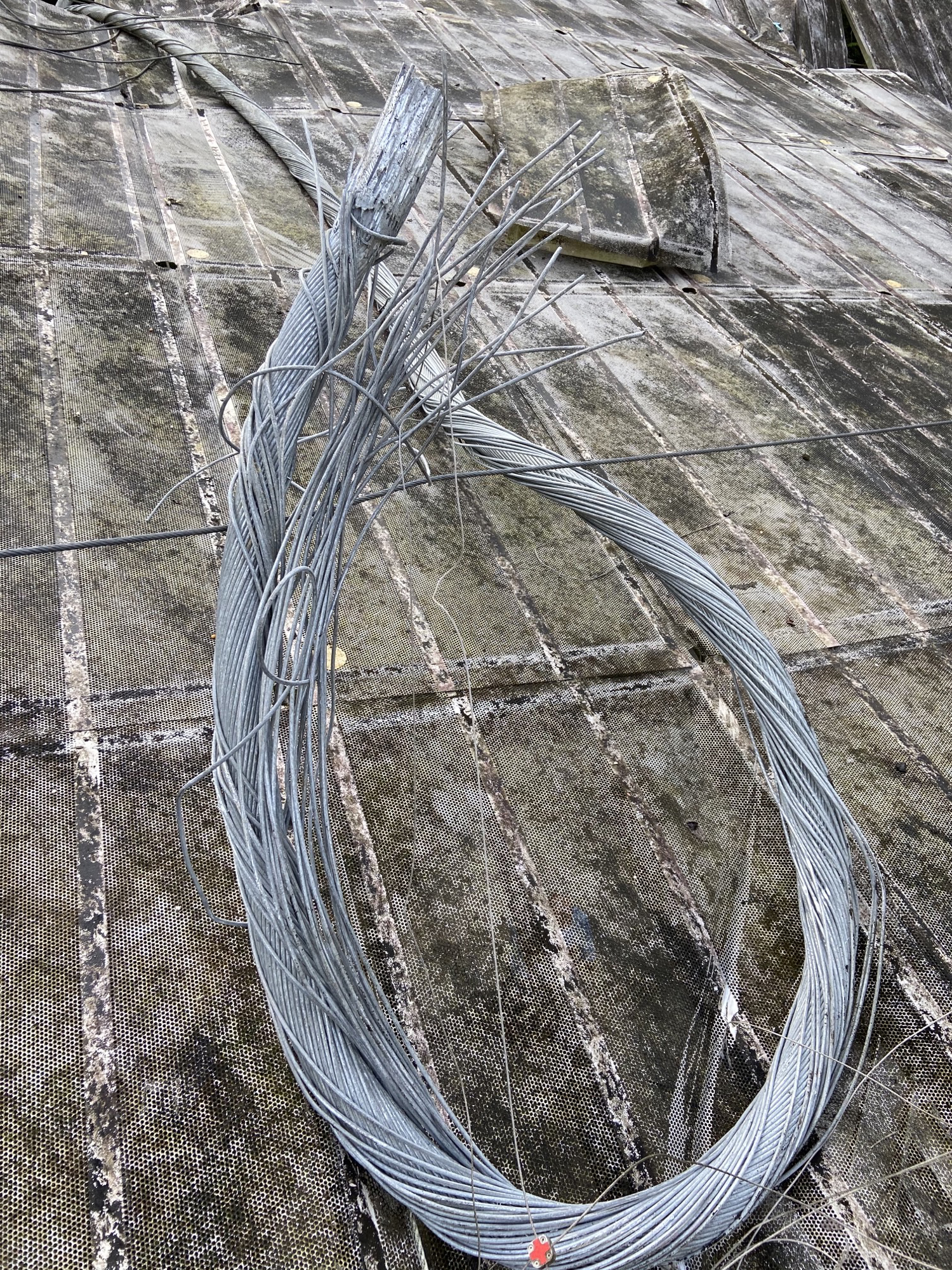
The iconic Arecibo Observatory in Puerto Rico has gone dark, at least for a little while.
One of the telescope's supporting cables snapped early Monday morning (Aug. 10), ripping a 100-foot-long (30 meters) gash in the giant radio dish, according to the University of Central Florida (UCF). The observatory has been shut down while engineers assess the damage and formulate a fix.
"We have a team of experts assessing the situation," Arecibo director Francisco Cordova said in a UCF Today statement. "Our focus is assuring the safety of our staff, protecting the facilities and equipment and restoring the facility to full operations as soon as possible, so it can continue to assist scientists around the world."
Related: The Arecibo Observatory: A giant radio telescope in photos
The 1,000-foot-wide (300 m) Arecibo got up and running in 1963. It was the world's largest single-dish radio telescope until 2016, when China's Five-hundred-meter Aperture Spherical Telescope claimed the mantle.
Arecibo has done a wide variety of work during its long life, from tracking and imaging near-Earth asteroids to listening for possible signals from advanced alien civilizations. And its communication attempts have not all been one-way: In 1974, scientists used the observatory to beam the pictorial "Arecibo Message" toward M13, a globular cluster that lies 25,000 light-years from Earth.
The observatory's fame extends beyond the astronomical community. The climactic scenes of the 1995 James Bond movie "Goldeneye" were filmed there, and Arecibo played a prominent role in the 1997 science fiction film "Contact," based on the book by Carl Sagan.
Get the Space.com Newsletter
Breaking space news, the latest updates on rocket launches, skywatching events and more!
Related: The 10 biggest telescopes on Earth

Although the photographer in me prefers the perspective of the photo already making the rounds on Twitter, here's a far-less-catastrophic-looking telephoto shot, courtesy of Phil Perillat, of the damage sustained by @NAICobservatory due to the cable failure Monday. pic.twitter.com/bClRxkQk8kAugust 12, 2020
We have no words.https://t.co/nKzFZtV3DE pic.twitter.com/FIo5NbYPGfAugust 11, 2020
Arecibo has bounced back from damage before. For example, Hurricane Maria knocked the observatory offline when it slammed into Puerto Rico with devastating force in September 2017. But Arecibo's lights came back on just a few months later, in December.
Arecibo is a U.S. National Science Foundation facility. The observatory is managed by UCF, in collaboration with the Universidad Ana G. Méndez and Yang Enterprises Inc.
Mike Wall is the author of "Out There" (Grand Central Publishing, 2018; illustrated by Karl Tate), a book about the search for alien life. Follow him on Twitter @michaeldwall. Follow us on Twitter @Spacedotcom or Facebook.
Join our Space Forums to keep talking space on the latest missions, night sky and more! And if you have a news tip, correction or comment, let us know at: community@space.com.

Michael Wall is a Senior Space Writer with Space.com and joined the team in 2010. He primarily covers exoplanets, spaceflight and military space, but has been known to dabble in the space art beat. His book about the search for alien life, "Out There," was published on Nov. 13, 2018. Before becoming a science writer, Michael worked as a herpetologist and wildlife biologist. He has a Ph.D. in evolutionary biology from the University of Sydney, Australia, a bachelor's degree from the University of Arizona, and a graduate certificate in science writing from the University of California, Santa Cruz. To find out what his latest project is, you can follow Michael on Twitter.
-
newtons_laws A bit surprising that one of the supporting cables snapped, was there an unprecedented storm occurring that imposed greater than design loads when it failed? If not then it suggests that the cable must have been gradually deteriorating over a period of time, one would expect that there would be a periodic inspection regime in place (probably both visual and Non Destructive Testing methods such as steel cable magnetic testing) which would be expected to detect problems before failure. Doubtless there will be an investigation into the reasons for the cable failing.Reply -
Spaceman Joe Blow While it's difficult to determine exactly what's visible in the close-up photo of the snapped cable, the large bundle where the break occurred appears to have a significant amount of material surrounding the cable strands adjacent to the break. It could be corrosion, although the coloration isn't rust (these have to be carbon steel cables).Reply
It seems more like the failure occurred at an anchor point, i.e., it wasn't a break at all, but a failure of a fixture that surrounded and restrained the cable, e.g., a swage (pressure) collar. However, the area where the extra material on the strands is visible appears to be present only a few feet along the length of the cable, which seems very short for such a critically-loaded component.









